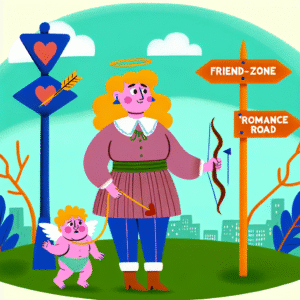- Ever noticed how your partner’s birth order subtly shapes your relationship vibe?
- Eldest and youngest pairings can lead to interesting dynamics—like a yin and yang of family responsibility.
- Discover the playful tug-of-war about responsibility and approach to life that an older and younger sibling can create.
You ever find yourself in a relationship and think, “Wow, my partner acts like a classic oldest child”? Or maybe you’re the more relaxed youngest in the relationship? It’s like you’re living in a quirky sitcom where the characters perfectly represent their roles in the family hierarchy.
When it comes to birth order, it’s not just a quirky fact from a family reunion; it can actually influence everything from how you argue about whose turn it is to do the laundry to how you celebrate holidays. Let’s dive into the complexities of quirky sibling traits, explore how these might blend (or clash) in relationships, and bring some tangible data into the mix!
The Birth Order Dynamics
The concept of birth order theory suggests that the order in which children are born into a family can shape their personality, preferences, and even their romantic behaviors. Here’s a brief breakdown of some classic traits:
| Birth Order | Common Traits |
|---|---|
| Oldest | Responsible, organized, natural leaders |
| Middle | Diplomatic, adaptable, often feel overlooked |
| Youngest | Fun-loving, easygoing, can be overly reliant on others |
| Only Child | Perfectionistic, assertive, mature for their age |
Now, what happens when an eldest sibling pairs up with a youngest sibling? It’s like a dance-off between order and chaos—a glorious tango that can either result in a beautifully choreographed routine or a wild, clashing mess.
Setting the Scene: “Talk to Me, Baby”
Imagine this: you, the youngest in your family, come home from a hectic day and flop onto the couch without a care in the world. In walks your partner, the oldest, who just spent an hour meticulously planning out the weekend, organizing a spreadsheet for every possible activity.
Scene 1: Communication Breakdown
- Oldest: “What’s the plan for dinner? I think we should meal prep for the week.”
- Youngest: “I just want pizza and Netflix. Isn’t that what weekends are for?”
- Oldest: “But…responsibility! We can create a schedule!”
Funny, right? But there’s a serious undertone here. Communication styles can radically differ based on birth order, leading to misunderstandings. And those misunderstandings can escalate if not addressed.
Data-Driven Decisions: Stats and Studies
Research highlights that sibling position does indeed play a role. A 2020 study by the Journal of Family Psychology found that partners with differing birth orders often had varying approaches to conflict resolution. Couples reported:
- 70% of eldest-youngest couples felt they had to balance responsibilities.
- 55% noted differences in how they plan vacations or make decisions about finances.
What do these numbers mean? The odds are in favor of some interesting energy!
Advantages of Mixing Birth Orders
Bringing an oldest and youngest together can produce wonderfully unique outcomes.
The Balance Effect
- Responsibility vs. Relaxation: The oldest usually has a knack for planning, which can help the youngest focus their enthusiasm into something productive.
- Goal Setters & Free Spirits: Eldest can learn to inject some fun and spontaneity into their usually structured lives, while youngest can gain some much-needed structure.
Example Time!
Consider Jill and Steve. Jill, the oldest of four, has always been the caretaker. Steve, the youngest, grew up with siblings who guided him but often treated him as the baby of the family. Their relationship? A mix of laughter and occasional disharmony.
- Balance in Action: While Jill comes up with a savings plan, Steve suggests they celebrate by treating themselves after every major savings milestone!
Disadvantages: The Tug-of-War
Of course, where there are advantages, there are also challenges.
Clash of Styles
- Conflict Resolution: The eldest may take their responsibilities too seriously and get frustrated at the youngest’s laid-back attitude, leading to tension.
- Resentment: Youngest siblings might feel “baby-ed” or unappreciated if they think their older partner always takes charge.
Does it Really Work?
Sarah and Mark faced difficulties because Sarah, the older sister, often found herself managing their household while Mark would come home, then promptly lose himself in video games. This disparity led to serious discussions about partnership roles and expectations.
The “Perfect Mix” in Relationships?
Despite the potential for conflict, many couples embrace the birth order dynamic with grace.
Couple’s Cheat Sheet for Success
- Open Communication: Talk about responsibilities and plan together.
- Freedom in Roles: Allow for flexibility—maybe your partner can handle the bills, and you take care of making the fun plans.
- Shared Experiences: Engage in activities that challenge both of your comfort zones.
Compatibility Checklist
Here’s how you could navigate these waters:
| Aspect | Oldest Traits | Youngest Traits | Couple Strategy |
|---|---|---|---|
| Decision Making | Detail-oriented | Spontaneous | Create a joint priority list—combine lists! |
| Problem Solving | Methodical | Creative | Open a discussion where both approaches are respected. |
| Task Management | Organized | Playful | Set a fun reward for completing chores. |
Future Impact: The New Age of Relationships
As society evolves and more couples blend different backgrounds, we see the potential for older-younger sibling dynamics to reshape relationship norms. What does that mean for you? Realigning responsibilities, negotiating differing communication styles, and learning to appreciate the quirks from your partner’s upbringing.
The best part? You’re not just completing a relationship checklist; you’re creating a unique blend of experiences that marries practicality with joy.
Ethical Considerations: A Critical Perspective
While it’s fun to explore birth order, it’s important to sidestep the potential pitfalls of categorization.
- Stereotyping: Birth order shouldn’t be used to box people into specific roles—everyone is unique, regardless of family dynamics!
- Oversimplification: While research shows trends, it doesn’t account for how family structure, culture, and individual circumstances shape personality.
Relationships are human, nuanced, and filled with unique stories. Reduce the factors to a few birth order stereotypes, and you miss the true essence of partnership.
Conclusion: The Dance of Life
Whether you’re navigating the structured world of an oldest sibling or the breezy calm of a youngest, remember: relationships are all about harmony. Just like that perfect playlist mix of your favorite upbeat tunes and smooth jazz, maximizing the dynamics of birth order can create something magical.
So, next time you feel the tension bubbling up over who gets to choose the takeout or how the vacation gets planned, take a step back. Appreciate the dance, embrace the quirks, and think, “How lucky am I to share this journey with someone who balances me out?”
Embrace the chaos and love the responsibility—keep that relationship alive and kicking!
youngest siblings, oldest siblings, birth order impact, relationship dynamics, communication styles, responsibility, family roles, partnership strategies, couples compatibility, relationship tips






My date dropped a bizarre comment, and now it’s stuck in my head like a catchy song—help!